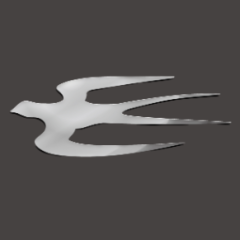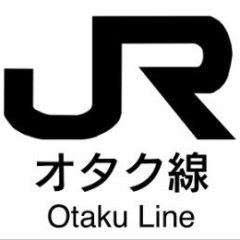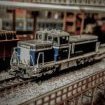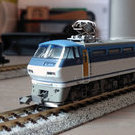Search the Community
Showing results for tags 'kato'.
-

kato Free Kindle N-Gauge Japan Layouts with Trackplan (Some US Layouts as well)
bartmanDE posted a topic in Structures
Only for the German members (maybe other too, pls check by your own), there is now the opportunity ... "2 Monate Amazon Kindle Unlimited kostenlos testen" to gather via the Kindel and a free 2-month subscription KATO UNITRCK plans and layouts with detailed track plans Here is the list of the original eBook Japan layouts for KATO UNITRACK: Have Fun !- 1 reply
-
- 2
-

-
- track plans
- layout
-
(and 1 more)
Tagged with:
-
I got a total of seven Kato 20-210 double crossover on my layout and I realized that I may be doing something wrong with those... Indeed, two of them have died unexpectedly. Considering m overall satisfaction with Kato Unitrack, I am assuming I am doing something wrong... What seems odd is the fact that these two crossovers died in a similar fashion: at some point, there seems to be a short circuit located in one of the four solenoids used for powering each turnouts. Because of these short circuits, other turnouts soon become unresponsive. How did I identify the issue and confirm the short circuit ? Once I realized my double crossover was not working properly (typically following an unexpected derailment !), I opened it and investigated each turnout separately. Removing the faulty solenoid allowed to restore proper operation of the crossover for the three other turnouts. How I typically use my crossovers... These double crossovers are used to connect two tracks that are each powered with a different control box. Before the second double crossover died, I had to use a hammer to nail something close (less than a meter) from it. However, though I realize the vibrations induced by the hammer may be detrimental, I don't see how they could lead to any short circuit in the solenoid... Have you experienced something similar ?
-
I just realized at some point Kato released N700sets (10-547) with an actual enclosed gangway between cars. I don't think I've seen this on anything else before and I'm curious if anyone has any experience with these sets. I assume they must not have worked too well since they don't appear on anything else but they look pretty cool when combined in a set.
-
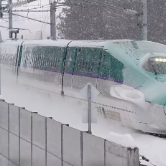
Kato DCC Install on 800 Series Shinkansen and Sunrise Express
BulletTrain816 posted a topic in DCC, Electrical & Automation
I came home from Japan with a bunch of EM13 decoders and an 800 and Sunrise. The shopkeeper that I could install DCC on the trains and I presumed that it was a drop in EM13 like all the other trains. When I got home and opened it up I was met with a surprise which was that there was no drop in. Can I hardwire to EM13 to the pickups or do I need to get another decoder?- 10 replies
-

Using the Tomix N-DU204-CL 5518 on Kato track
BulletTrain816 posted a topic in DCC, Electrical & Automation
I want to buy the Kato V13 and I was wondering if I could use the Tomix controller due to its double control capabilities. Is this possible and will I need an adapter if so which one? -
.thumb.jpg.c7e5c2d2c8b9bb9833da1dc5631a77c8.jpg)
Kato uses different engines for French and Japanese bullet trains - why ?
alain10025 posted a topic in General
Hi, In a previous post on this forum, I mentioned that the newly developed Kato slotless motor was not compatible with Kato French bullet trains (as well as other Kato European trains I bet but I did not confirm that yet). Here is a depiction of the Kato engine used in these trains. Yesterday, I opened my Kato JR700S Nozomi Shinkansen and realized that its engine was, contrary to that of the French TGV I have, the exact same dimension as the new Kato slotless motor (which is significantly smaller and slightly longer than the motor in the French TGV). I was able to replace the JR700S engine with a slotless motor, it now runs great and has a much better behaviour at low speed. One question though: why in the world would the engines in the Kato French bullet trains be so different from those in the Japanese bullet trains ?? -
Hi guys, I'm finally feeling the urge to take the plunge and delve into making my very first permanent N scale layout from scratch starting from the bench work construction of a dedicated table to fully furnishing it with scenery. It'll be something I'll want to make taking inspiration from a few other Japanese layouts by members in the Japanese Railway Society and possibly some here. I'd like to make it a layout I can proudly display at convention centers and train shows (who wouldn't), without being sanguine for my first project. The name I have so far christened it with (桜木の湯線) is after the area I'm in as well as mentioning my love of cherry blossoms and hot springs. I'd like it to be a mostly steam JGR/JNR era fictional layout. There may be no catenary, but I'll have many EL that I like (EF13, EF65) running on it as well! The first stage in my mind is configuring the final track layout before the first shovelful of sod is turned. I'm using an app called "TrainDesign" to make a relatively complex track arrangement (hopefully not too advanced for my first layout) with KATO N Unitrack to fit within the confinement of space (a single table 1462 mm x 906 mm) I'm willing to spend in my apartment. Does anyone have experience using this, or would they recommend another program? The train table is something I'd really like to make the most of by having it be sturdy, portable and also presentable while still remaining practical and minimal in its embellishments. To give it a "Japanese" flavor, I'd like to stain and lacquer the wood finish of the fascia of the table and add ropes at the narrow ends for carrying it. A layout depicted below ("Yama no yu sen") built by Stephen Gomersall is said to have done such. Note the pedestrian bridge. I'm looking into more details about this layout for more inspiration. Any suggestions or advice? I thank you all for any help you can offer so I put my best foot forward! The layout will also strongly take inspiration from this depot model of a fictional Japanese roundhouse called "Kamanashi Kikanku" built by Phil Hendry. I hope to acquire the same or similar kits from which the roundhouse and turntable were built (Fleischmann). If anyone knows a good locale to purchase them, many thanks! I will soon shown the decided general track plan and rough sketches of the table I'll want to build for sociable critique before moving to the next stage; buying materials. Aside from the roundhouse mentioned above, I intend to have an engine house as well, merely since I'd like there to be plenty of space devoted to showing off my locomotives awaiting their next turn of duty. I have the three bay engine house kit that resembles the classic stone one in Hitoyoshi, one of my favorite landmarks on the line. I would however like to alter the color of the brickwork of the kit by making them a lighter shade (like the VoR shed below) to match the cedar woodwork of the table. If anyone has experience with kits such as what techniques or paints can be used to achieve this, much appreciated. Update (Nov 2, 2023): Here's the current track plan design courtesy of Doug Coster who rendered this for me in 3D. I'm pretty satisfied with it.
-
Recently I've noticed, that the Kato Shinkansen 100 (10-354) was "missing" a pantograph on the lead car (see the pic). And I was wondering if that was prototypical... It just seems somewhat odd and awkward to have that empty space. I also found pictures of a Shinkansen 100, where this space was occupied by a pantograph, which makes me want to install one myself
-
Hello, I have been very enthusiastic about the new Kato slotless motor and I purchased a couple of them on Hobbysearch. More precisely, I ordered the Kato motor 11-503-A. Order was smooth and delivery prompt... But... I have a problem. Indeed, my initial plan was to use these slotless motors in some of my Kato trains, in particular for high speed trains such as, for instance the TGV 10-1529 (réseau duplex). After all, the product is advertised on the website as "This product is compatible with motors with flywheels.". However, after receiving the motors, I quickly realized they are slightly smaller than those in my TGVs... And I am left wondering what I can do with these motors... I feel a bit silly but I also believe somebody else could make the same mistake so I come here searching for confort / redemption and mostly ideas ! Thank you !
-
Hey guys, (Note: All the research outlined below is relatively crude, as i don´t know japanese and had to utilize google translate for most of this. It is likely that i just missed something because of that) I´ve recently been pondering on buying a Kato C57 1 to add to my fleet. This is why I´ve trying to figure out, if there are alternatives to couple 2 steam locomotives together, without using the kinda ugly and un-prototypical Kato tandem coupler, which attaches to the front bogie. And thus I´ve lost my mind and free-time to trying to figure this out... In a nutshell: I did find a way to couple 2 locomotives together in an elegant and prototypical looking fashion (link to this video by shigemon). And while I found, that using the Kato Z05-0746 coupler (originally Kato USA part 28-270) seems to be the most popular way of doing this mod, that exact part doesn´t seem to be available anywhere (quite a trend as we´ll see later). Admittedly, I couldn´t check Kato USA, as their parts-website is under maintenance and is thus not available. Doing more research, I found that this mod is possible with other couplers (yay!). As seen here (video by ゆかり) and here (video by でんきちくらぶ) the mod is possible with Greenmax, other Kato (Z01-0239) and even Micro-Train couplers (though MT couplers seem to require heavy modification to the body, which I don´t want to do). However, once again, both Kato and Greenmax couplers are once again seemingly sold out everywhere. This is where my questions come in: As an "alternative" I did manage to find Kato 28-235. While it does mostly contain stuff irrelevant to the topic at hand, it does seem to contain the Z01-0239 couplers I was looking for. Could anyone perhaps confirm this? I haven´t been able to find any information on the exact contents of this parts bag. I also noticed how similar the greenmax couplers and the Kato 28-187 / 28-188 couplers, so could you perhaps use these as replacements? Shigemon also mentioned, that you could modify z-scale couplers, does anyone know which one he meant? I personally couldn´t find any info on that front... I was also wondering, if there was a way to utilize any other type of coupler (preferably Kato), so any info on that would be appreciated Generally, any info on this topic would be appreciated. I haven´t been able to find a single piece information in english, which is why i am making this post Thanks in advance
-
I have been looking for a comparison between Kato Eurostars 10-327 and 10-1295... I recently found a - brand new - set of extra passenger cars for Kato 10-327 (ref. 10-328) and I am wondering if it is compatible with the more recent set 10-1295. Would you happen to know this ?
-
Hi, I have a couple of Kato steam locomotives (Hitoyoshi, C62-Tokaido and D51-498). I noticed on the forum that some people seem to have issues with certain models derailing often. From my experience, I mostly have issues with the D51-498 with the last set of wheels (see picture below) that tends to "jump" left or right, particularly on turnouts. However, I do not see any way to fix this issue since there does not seem to be any screw to shift the position of these wheels or the stiffness of their connection to the locomotive... Did anyone encounter such issue and find a way to fix it ? Thank you ! Alain
- 2 replies
-
- kato
- steam locomotive
-
(and 1 more)
Tagged with:
-
Hi! I’m wondering if the Kato 10-354 takes an EM-13 and FL-12? Thanks!
-

My 3 level railway - Japanese N gauge, British OO, and Lego
drt7uk posted a topic in Layout Building
Hi folks, I've spent about 4 months building a 3 level layout for my British OO, Japanese N and Lego and it's finally finished*. Hope you like the video. https://youtu.be/Nr3axLF001Q Feel like I have an encyclopedic knowledge of how to build a layout in a shed now, from insulation to wiring etc to the removeable bridge for the door, so if anyone has any questions happy to advise. Bridge has copper strips underneath to keep the connection, and is lifted up to leave the room, with a section of the scenery swinging open. Need to step over the Japanese one to leave which is a bit tricky but there's a handlebar on the outside to help. None of it is digital - Gaugemaster and Kato controllers respectively but with the Hornby HMDC app to control the two branch lines. Lego is battery powered, remote control. Shed is well insulated, have a heater and a dehumidifier in there. Layout is 6m x 2.5m so plenty of space for nice long platforms! *Lots of little details to add to the British one from signals to passenger bridges to station names etc but the laborious work is finally over, now on to the fun stuff: running trains and adding little details. Going to landscape the temple area with static grass, paths and lakes too. -
My local Kumamoto hobby shop has disclosed to me that KATO intends to produce the SL Hitoyoshi (as well as SL Aso Boy while they're at it) in N gauge during 2022. I trust their word as since they're long-time KATO dealers for several decades now, and I'm a frequent customer of theirs. It makes sense considering the number of JR Kyushu trains and locomotives they've made so far, never mind the Tohoku-region (2028-1) 8620. I'm hopping we'll all see it as a Planned Product in the soon-to-be-released 2022 catalog. I really like their JR Kyushu DE10. This is the video from which I originally learned of the SL Hitoyoshi, way back before I came here. It immediately became my favorite train in Japan.
- 12 replies
-
- 2
-

-
- jr kyushu
- steam locomotive
-
(and 1 more)
Tagged with:
-
The train in question is an E231-500 series motor car which is at least 4 years of age, and has a (I think) 3-pole motor with flywheels on either side. Normally (as everyone who models knows lol) when the power is turned to moderate speed on the powerpack (mine is a Kato standard S) the motor begins to operate and the head/taillights on either side of the train light up. However, this time when the motor car is placed on the track, the head and taillights of the leading cars flicker off, the motor car does not move and a slight odour of electrical burn is emitted from the powerpack vent. If I turn the speed all the way up on the powerpack, the green power lamp on the powerpack turns off with a click (then I push the re-start button) and the controller returns to normal. I suspect that there is a short circuit in the motor (all the bogies and copper plates on the motor car are touching in normal position) but I do not know where. Does anyone have solutions to the problem?
- 56 replies
-

Wiring Kato turnouts and double crossover for DCC, occupancy detection and automatic control
williamv posted a topic in Layout Planning
While I wait for my Unitrack to arrive, I've started planning the wiring. I'm hoping someone can help with the turnouts. Please forgive me, I'm new to the hobby and I'm still learning. I'm wiring it for DCC, and I'll be using Digitrax. I'll be using occupancy detection, also Digitrax. In my track plan, each coloured section is a detection block. The purple lines show where I intend to power the tracks with terminal unijoiners (power to each detection block not shown). I intend to control the layout with TrainController. My understanding is that I do not need to isolate my turnouts (Kato #4), as long as I set them to non-power routing, with the frog set to insulated. There seems to be some confusion online about power-routing vs. non-power routing labels but I'd be setting so them so that all rails are powered, regardless of switch position. I've isolated my turnout sections, only for the purpose of occupancy detection, with a block on either side of the turnout. I'm slightly unsure about where to connect the track power for the turnout. At each end of the turnout, I have a separate detection block, which I need to isolate from the turnout. Q. If all rails are live, and the frog insulated, could I connect the power at any end of the turnout? Then I come to the double crossover, which is what has me confused. I believe that I need to power each of the 4 ends of the crossover. However, I have blocks on either side of the crossover, so I would need to isolate the double crossover from the adjacent blocks, so where would I connect the power to the crossover? I suppose I could add a short Unitrack piece (S62) on either side, then I could connect the power at the joins between the crossover and the S62, then insulate at the join between the S62 and the next piece. Unfortunately, I'm already at the edge of the layout, so I can't afford to extend the track plan. Q. Have I understood this correctly? Do I have any other options? Is it best to keep the crossover and turnouts between blocks, or can they be in the blocks? Thanks for any advice! -
I know that both Kato & Tomix produce E5 and H5 Series models, but I am wandering about everyone's experience with them and what are the differences other than the obvious coupling and diaphragm systems? Most of my Shinkansen are currently by Kato: 100 Series Grand Hikari, E2 Asama, E2-1000 Hayate, E3-0 Komachi, E3-1000 Tsubabsa & E4 Max. As you can tell I have concentrated on JR East Shinkansen. I have one Tomix 200 Series H unit Super Yamabiko, I am a bit partial to the late 80's shark nose sets, which is why i also have the full 16 car set of the Kato 100 Series Grand Hikari! And When I get around to expanding my fleet with an E1, it's gonna have to be the Tomix model, since the Kato model has been out of production since before I moved to China.... But I am not sure what to do when/if I decide to get E5 and H5 sets. I feel that the diaphragm on the Tomix models looks much better and closer to the full width diaphragms on the real trains. And I know from my experience with my Super Yamabiko that the Tomix conductive coupling system is reliable. Would I be right in guessing that the Tomix TN couplers hidden in the noses are not compatible with Kato's Shibata couplers? And if I ever choose to DCC my Shinkansen, how easy is it to install chips on a Tomix Shinkansen? At least the conductive coupling system should mean that the whole train can be fitted with a single multi-function decoder, right? Looking forward to hearing people's experiences, and comments on performance and maintenance would be appreciated too! Ewan
- 34 replies
-
- shinkansen
- e5
-
(and 3 more)
Tagged with:
-
Hello, I admit it’s been a while since I’ve been here. Train stuff has been inaccessible last year due to moving. It’s come back out, and I’m in a place where I can do something with it once again. Going through my catenary poles, I had forgotten that the set of the arch-style poles comes with two variants, in equal number, as shown below: My question is what is the typical application of each of these styles? Where along the line would each type be more likely to be seen? In addition, I would like to know what the most common transition points would be from one pole style to another, such as from these to the 23-061 or 23-059 (when used for double track with the same spacing). Thanks, Aaron
-
Hello, I need some help with my C11 (Kato 2002). It is a very smooth running locomotive but I have problems with the leading axle as it often derails on my turnouts. I use Arnold turnouts which aren't the finest but I would still like to run the C11 until I switch to a better track system. I have already widened the leading axle and it got a little bit better but not much. Any help will be appreciated!
-
Hello everyone! I was wondering if anyone would be so kind as to provide me with information, experience, or photos of shell compatibility between different years of the Kato ED75? I have a Kato 3009-5 with the original motor and was curious to know if I could place that model's shell on a newer model motor of a compatible ED75. Thank you! - Mauricio
-
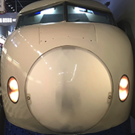
My custom solution for lighting KATO DCC trains
paolo posted a topic in DCC, Electrical & Automation
So, here's my take on how to light the interior of a model train. In particular, I'll talk about N-scale KATO trains (I haven't tried this on Tomix) in a DCC system. Since I have DCC, if I wanted to use the KATO lighting kits, I'd need to put a decoder for each car. I have around 80 cars, so the cost would be very high. Besides the KATO light decoders (FR11) are very hard to find, even in Japan. So I decided to just forget about decoders, and have the lights always on. Passenger trains usually have the interior lights always on anyways, and I don't have a yard where they should be off. Without a decoder, I couldn't use the KATO light kits, as the LED's would burn out after a few minutes. DCC system outputs around 18V, but those LED's are usually designed for max 14V, according to their manual (I wouldn't push them higher than 12V though). So I've designed a custom board, with the LED's and a few elements needed to make this work. I have no experience of soldering, so I looked for someone who could do it for me. A friend told me about JLCPCB.com, a Chinese PCB prototype company, that can manufacture a small batch of PCB's. They have a very user-friendly design tool, needed to produce the files that are necessary to get the PCB into production. Each board has: 4/6/8 LED's, depending on the type of car. Shinkansen have eight, some Shinkansen cab cars have six or four (for the Komachi). Other trains have six or eight. The LED's are arranged in two groups in parallel, with each group having the LED's arranged in serial a diode bridge, that converts the AC coming from the tracks to the DC that the LED's need (BR1) a low-dropout regulator, that lowers the voltage from what is coming form the tracks (around 18V) to 12V needed by the LED's (U1) a capacitor, to temporarily store some electric energy in order to avoid the LED flickering effect (C1) a resistor for each group of LED's (so in my case, two total, R1 and R2) This is the electrical drawing of the version with 8 LED's: Here's the list of all the components, with the link to the LCSC Electronics website, used by JLCPCB: - cold white LED, package 0402, link - 40V 1A 550mV @ 1A MBF Bridge Rectifier, link Fixed 35V 12V 2V @ 1A TO-252-2(DPAK) Dropout Regulator(LDO), link - 22uF ±10% 25V 1.2 Ω @ 100kHz -55℃ ~ +125℃ CASE-C_6032 Tantalum Capacitor, link - 402Ω ±1% 0.25W 1206 Chip Resistor - Surface Mount, link This is the PCB view taken from the online editor (easyEDA😞 Each PCB costs around 1.9 euro, in detail: EUR 0.3 for the PCB prototype EUR 1.6 for the components and the assembly Then of course you need to add the shipping. I got them in three separate orders, each time I refined the design. The last order was for a total of 50 pieces, EUR 80 for the components and 30 for the shipping. The minimum size for a PCB if you ask for the components assembly is 2 cm, but that's too wide to fit it inside a car. So once I received them, I had to cut them one by one so they could fit. I cut them to around 1.3 cm using a Dremel. The lengths vary from 13 cm to 6 cm. The next problem was how to connect the PCB's to the copper pick up of the car. The KATO lighting kits come with a set of copper strips that fits in each car, these: After a lengthy search, I was able to find them on Rakuten Japan,sold in a package of 20 strips at 480 yen: This is the link to the Rakuten page. If you need to look for them, this is the title of the item: オリジナル K集電金具 集電板(集電シュー) カトー(kato)にも使えます 20個セット Using a short piece of wire, I soldered these strips to the PCB (I bent them downward so they make a better contact with the wheels): On JLCPCB, they only have cold white LED's, while most of the trains have more like warm white lights. So I had to find a way to make them yellowish. I tried putting a drop of orange paint on each LED, but the result wasn't consistent, you had some really orange ones and some white ones. After watching a video on Luke Towan's YouTube channel, I decided to use his method and apply some Tamiya tape, usually used for masking before painting, on each LED: To fit the PCB inside the cars, most of the time you need to trim the plastic supports, that I think are designed to hold the transparent acrylic strip used in the KATO lighting kits. Without trimming those, you won't be able to close them properly. This is the final result (sorry but getting the right color temperature it's a bit hard, in the pics they all look much more blue than they actually are): I used them on Shinkansen (N700A, E2, E3, E5, E6, E7), E233, E235, E657, E353. They all fit perfectly. I'd prefer them to be a bit warmer, but they're good enough. I think that's it 😄 Paolo -
Hi Guys, I’m taking the plunge with Kato. I’m going to buy a few individual packs of track to get me rolling. Does anyone know the part numbers for R249 45 degree curves, the 248mm straights, feeder track (62mm I think) and 62mm straight all with concrete ties. Also what connector does the feeder track have? thank you
-
I have recently fitted some Kato lighting to my Green Max 3 car emu 30257/8/9, which runs quite smoothly and quietly. It was a fiddly job but the non motorised cars were the easiest and were fitted within two or three attempts. However, the powered centre car needed a lot of trial and error, and in the process the body has stretched sideways resulting in the chassis becoming loose under the body. Any advice please? Is this a common pitfall when handling such delicate models and I stress I was really gentle when trying to align the lighting coils in order to function properly. I have a new Farish British Railways class 31and it is very noisy compared to the GreenMax unit. Are the Japanese motors superior to the English ones? Could anybody give me the technical description of the motors used in each brand. Could I also ask if a "Brawa super quality" N Gauge brand exists, please, and the motors they fit to their models? I just cannot tolerate the poor quality junk that British companies churn out for the captive market here.
-
Hi all, After finding some 6mm MDF in the garage, I've decided to give T-Trak a go. I've got 3/4 of the way through putting two "standard" 308mm x 300mm modules together. The photos show the results: Poorly assembled, constructed etc, but hey it's a learning curve!













